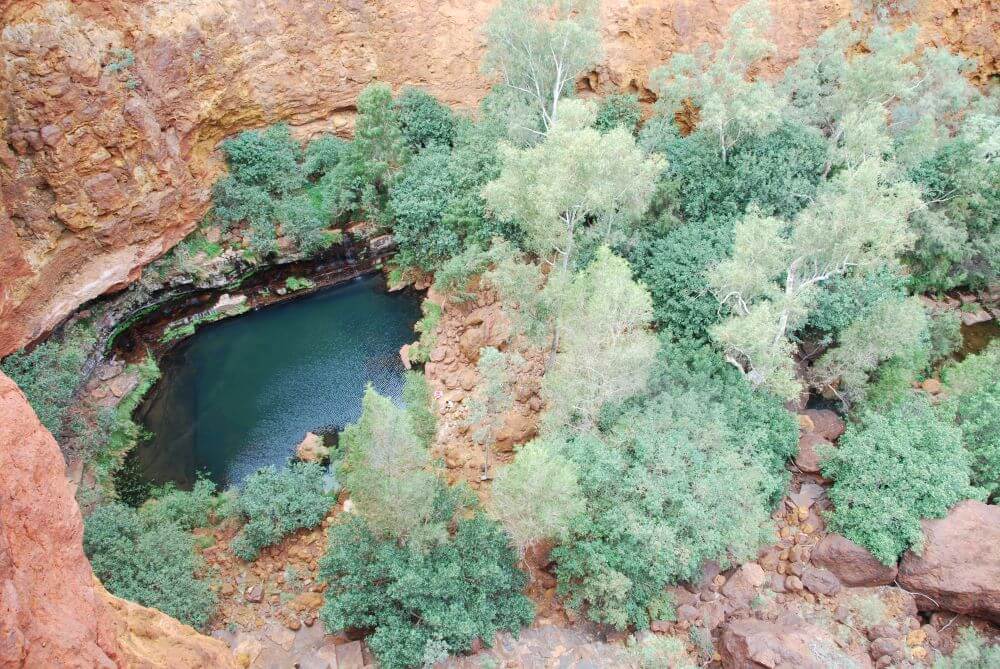Which of these natural Australian landmarks have you seen? Maybe a few are on your wish list. From reefs to rainforests and amazing coastline to ancient outback landscapes, Australia has some breathtakingly beautiful natural attractions to see on your next road trip.
You might ask why isn’t Lord Howe Island here? We had arguments deciding which natural Australian landmarks to include. This was going to be a top 10. It turned into a top 20 then a top 30. We had to stop! So, for now, the list is limited to places you can drive or catch a ferry to.
Let us know what else you think should here or just enjoy getting some inspiration for you next trip.
Disclosure: Please Note That Some Links In This Post May Be Affiliate Links, And At No Additional Cost To You, We Earn A Small Commission If You Make A Purchase. Commissions Go Toward Maintaining The Curious Campers Website.
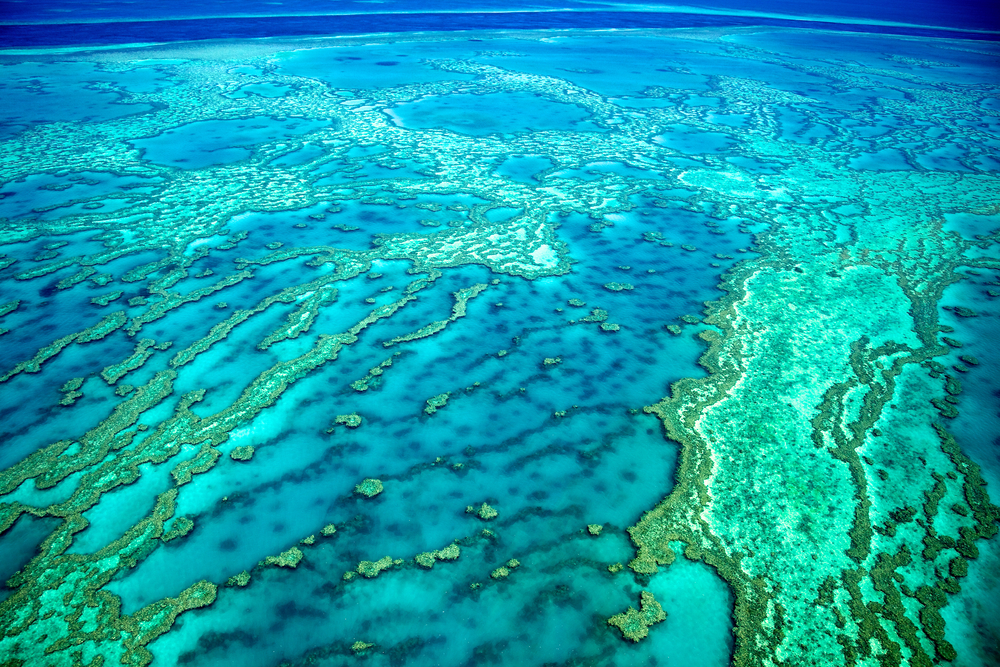
Contents
- The Great Barrier Reef, Qld
- Kakadu National Park, NT
- The Blue Lake, SA
- Uluru, NT
- Kings Canyon, NT
- Ningaloo Reef, WA
- Wilpena Pound, SA
- Great Ocean Road, Vic
- Bungle Bungles, WA
- Daintree Rainforest, Qld
- Mungo National Park, NSW
- Maria Island, Tas
- El Questro Station, WA
- Shark Bay, WA
- Kata Tjuta, NT
- Atherton Tablelands, Qld
- Naracoorte Caves, SA
- The Grampians, Vic
- The Pinnacles, WA
- The Scenic Rim, Qld
- Wineglass Bay, Tas
- Undara Lava Tubes, Qld
- Karijini National Park, WA
- Katherine Gorge, NT
- Valley of the Giants, WA
- Kangaroo Island, SA
- Litchfield National Park, NT
- Mount Kosciuszko, NSW
- Cape Le Grand National Park, WA
- Blue Mountains, NSW
- Otway Ranges, Vic
- Umpherston Sinkhole, SA
- Fraser Island, Qld
- Nullarbor, SA
The Great Barrier Reef, Qld
The Great Barrier Reef stretches 2,300 km from the Tip of Cape York to Bundaberg along the Queensland Coast. The 2,900 individual reefs and 900 islands make this the largest coral reef system in the world.
This UNESCO World Heritage Listed site is so large that it is visible from space. It’s home to a large variety of marine life. Turtles, manta rays, whales, dolphins, reef sharks, dugongs and thousands of colourful fish call the reef home. You can explore it by snorkelling, diving, sailing, scenic flights, and from glass bottom boats and submersibles.
Read More : Day Trips Snorkelling the Great Barrier Reef from Cairns
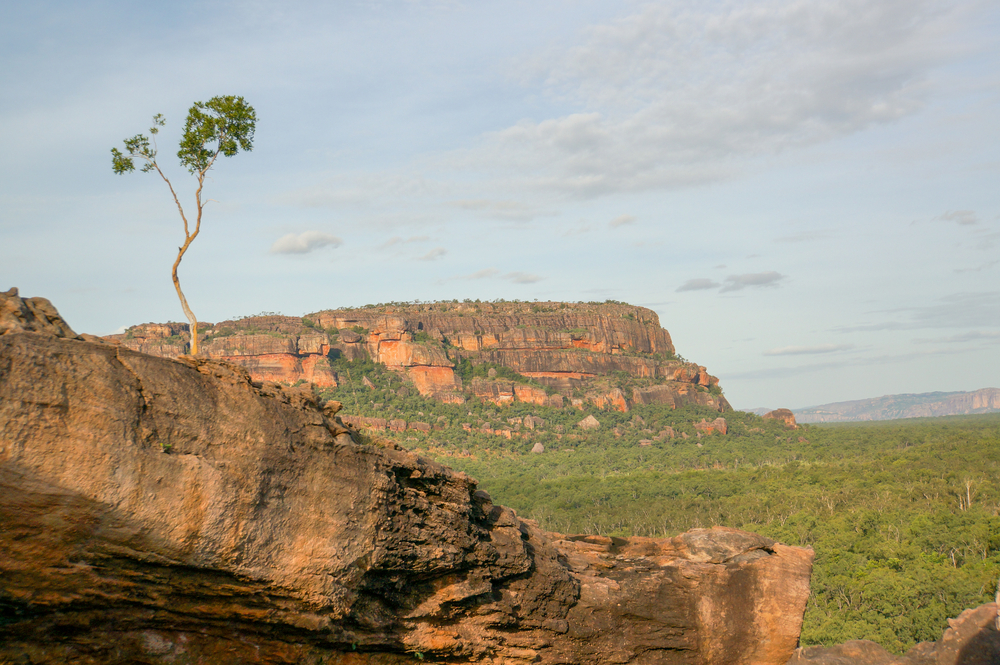
Kakadu National Park, NT
This World Heritage Listed Site is Australia’s biggest National Park covering over 20,000 square km in the Top End of the Northern Territory. It’s a landscape of rainforests, waterfalls, gorges, swimming holes, wetlands and ancient rock art.
Go for a cruise on Yellow Water Billabong to spot crocodiles and thousands of migratory birds. In the dry season many walks are available from Jabiru, or head to the East Alligator River or to Jim Jim or Twin Falls. During the wet season make sure you take a scenic flight to see the water rushing over the spectacular falls.

The Blue Lake, SA
The Blue Lake is near the centre of Mount Gambier in one of the regions dormant volcanic craters. During December to March the lake turns a vibrant blue colour before returning to a steel grey colour in the cooler months.
There are a number of lookouts surround the lake or you can walk the 3.6km path around the Blue Lake. You cannot swim in the 70m deep lake as it is the city’s main water supply. You can learn more about the lake on the Aquifer Tour which takes you down in a glass lift to the pumping station and viewing platform.
Read More : Visit the Blue Lake & other Mount Gambier Attractions
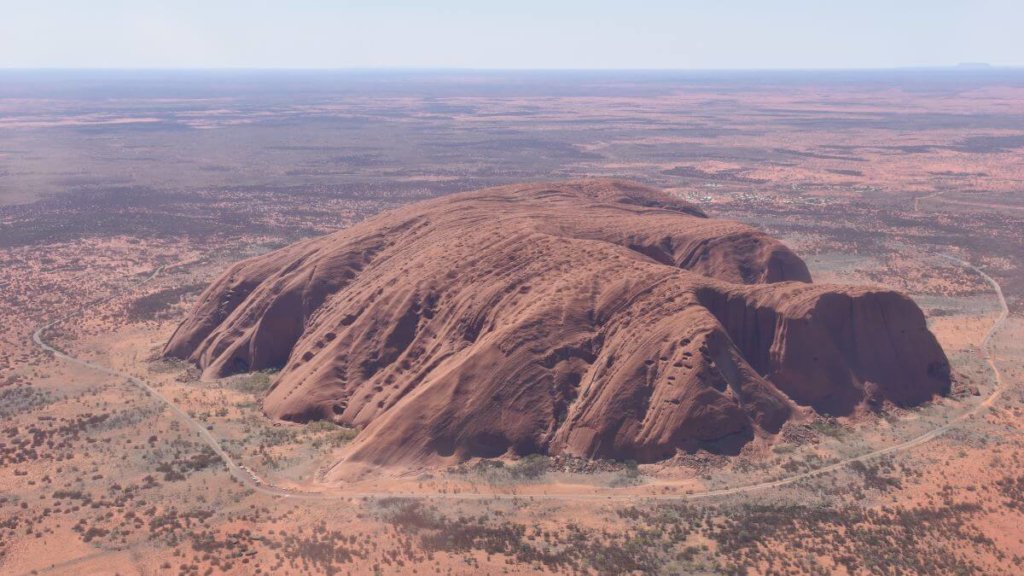
Uluru, NT
One of the most recognisable natural Australian landmarks is Uluru, or Ayers Rock. Uluru is one of the world’s largest monoliths, at 348m tall it towers over the surrounding desert landscape. The World Heritage site holds cultural significance for the local Anagu Aboriginal people.
You can experience the rock in many ways. Go on a tour with the traditional owners. Go on a camel ride, walk, or Segway tour around the rock. Take in a sunset light show or a unique outback dinner under the stars. A scenic flight is a must to truly appreciate the size and beauty of the region.
Read More : Get a birds-eye view of Uluru
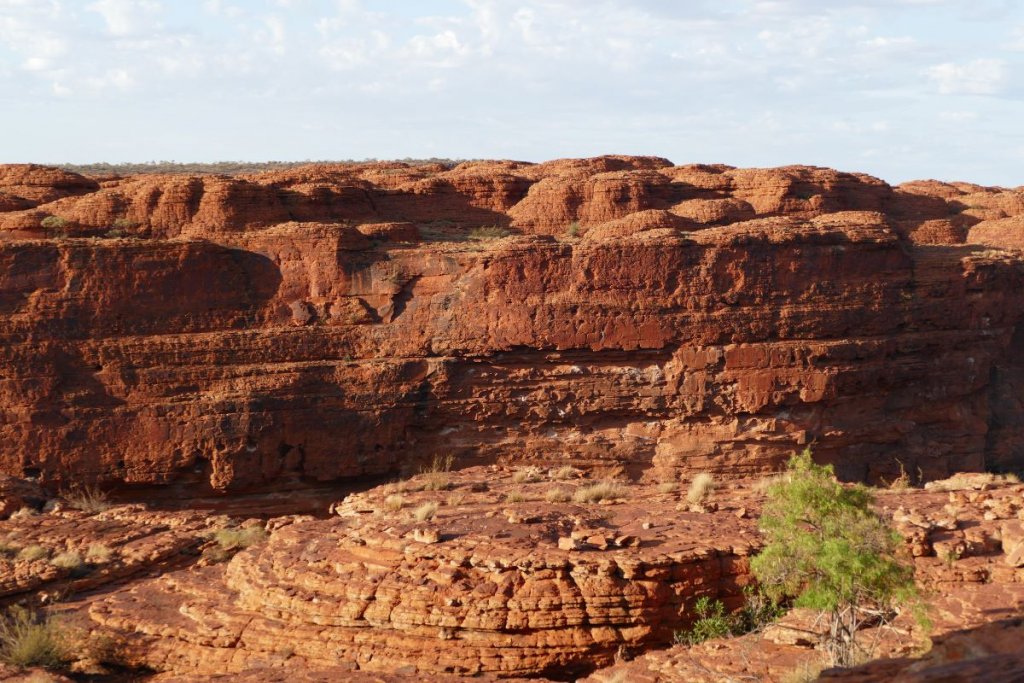
Kings Canyon, NT
Walk along the top of the canyon where 300m high cliffs towering either side of the palm filled valley below. The iconic Kings Canyon Rim walk is a must for fit visitors. The 6km walk takes you up the initial 500 steps to the top of the gorge, through the Lost City, across bridges and down to the canyon floor and the Garden of Eden.
Several shorter walks are available or opt for a scenic flight over the gorge, 4wd tours or a camel tour through the park. In the evening relax with a drink on the sunset viewing platform as the sun sets over Kings Canyon and the George Gill Range.
Read More : A complete guide to Kings Canyon Walks
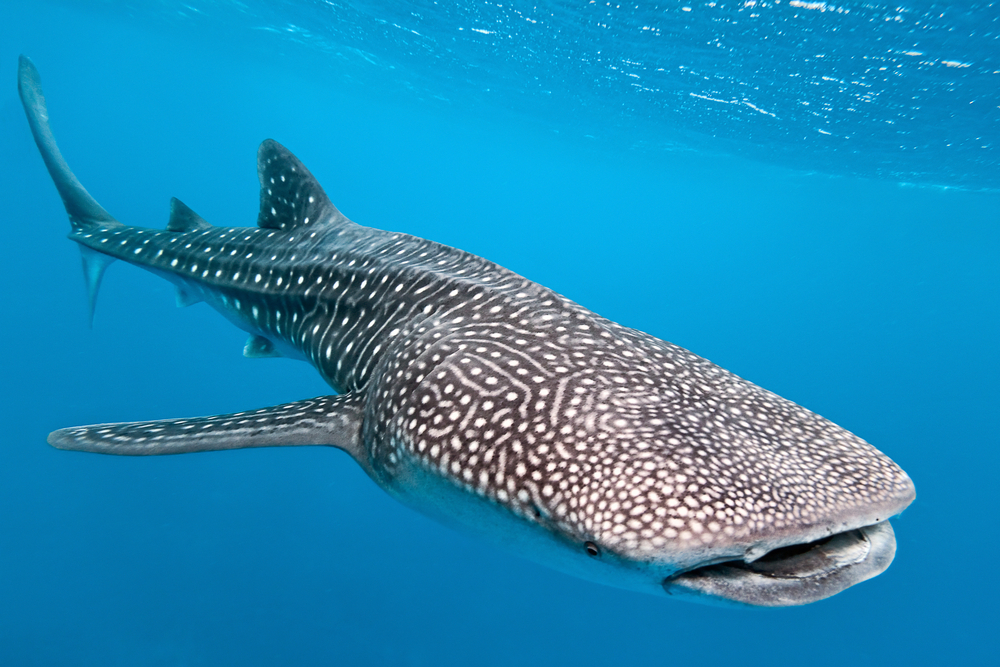
Ningaloo Reef, WA
The Ningaloo Reef is the world’s largest near shore reef system covering over 300km from Carnarvon to Exmouth in Western Australia. The UNESCO World Heritage site is remote and pristine and well worth the effort to get there.
Just a few meters off the shore you will find hundreds of colourful fish, rays, turtles and stunning coral formations. Jump on board a tour boat and swim with whale sharks, manta rays, dugongs, reef sharks and dolphins.
Read More : Swim with Whale Sharks on Ningaloo Reef

Wilpena Pound, SA
The Flinders Ranges is South Australia’s largest mountain range. The iconic Wilpena Pound is a natural amphitheater that is the centre piece of the Flinders Ranges National Park. With rugged mountain scenery, gorges and a huge array of wildlife and flora, it is a great outback Australian outback experience.
The Flinders Ranges has walks into Wilpena Pound and throughout the park. Follow the geological trail drive through Brachina Gorge and Bunyeroo Valley. Along the way stop at the lookouts for wonderful views and plenty of wildlife at dusk and dawn.
Read More : Things to do in the Flinders Ranges
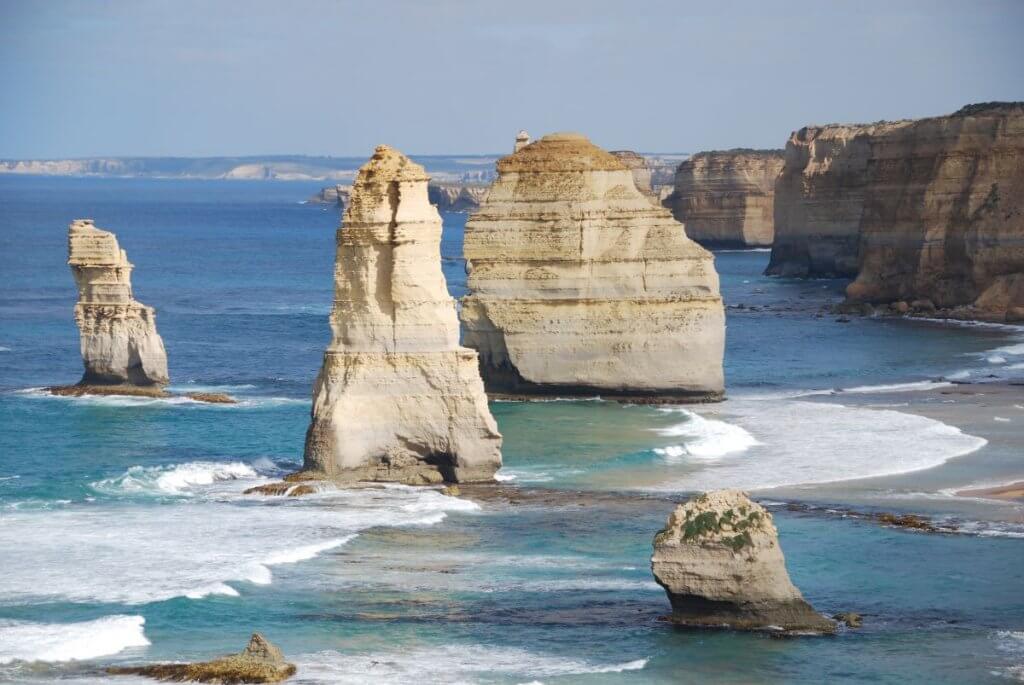
Great Ocean Road, Vic
The Great Ocean Road winds its way along the Southern Ocean coastline. Follow the 400km scenic drive between the Victorian towns of Torquay and Nelson to see this iconic Australian landscape. A major draw card is the pictured 12 Apostles, but you can also stop in at the Bay of Islands, London Bridge, Loch Ard Gorge and the Grotto.
Along the way you will find quiet beaches, plenty of wildlife and little coastal towns for coffee and lunch. Take a scenic flight over the main attractions and between June to October you might even spot a migrating whale.
Read More : Top Warrnambool Attractions & Day Trips

Bungle Bungles, WA
The Bungle Bungle Range are a World Heritage listed site in Western Australia’s Purnululu National Park. The park covers a huge 240,000 hectares of remote wilderness, desert landscape and the ranges.
You can head deep into the park to explore the striped domes on foot, walking through the narrow Echidna Chasm and stunning Cathedral Gorge. Guided 4wd tours are available but if you are short on time you can take a scenic flight from Kununurra to see the spectacular domes from the air.
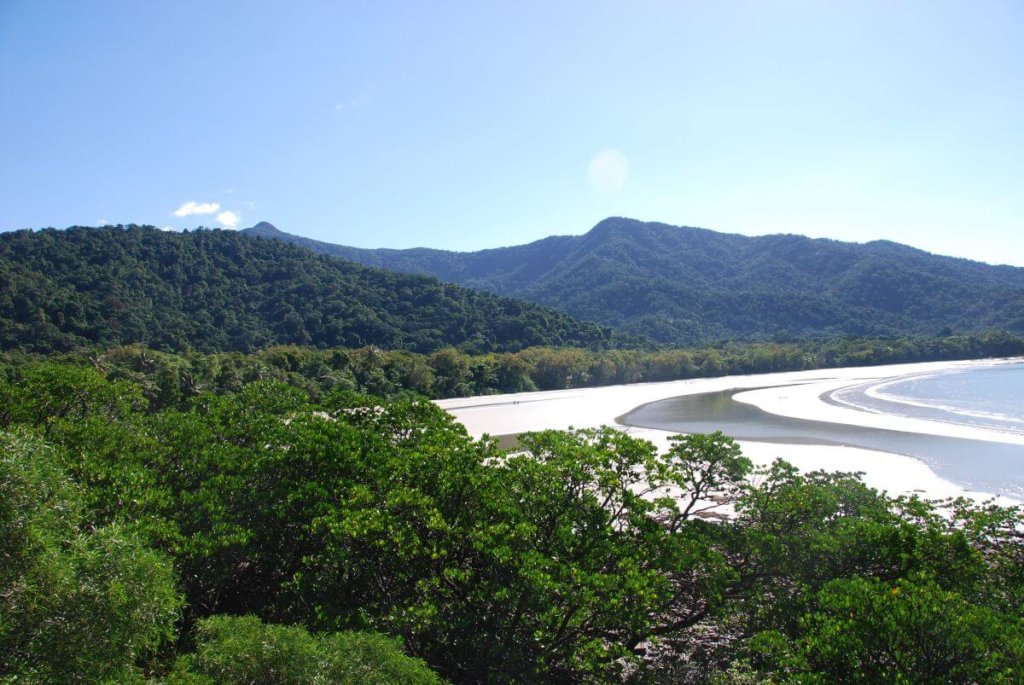
Daintree Rainforest, Qld
The Daintree Rainforest in Far North Queensland is up to 135 million years old, making it the oldest rainforest in the world. Follow the walking trails deep into the rainforest along boardwalks and pathways. At the Daintree Discovery Centre, walkways and platforms let you experience the rainforest from ground level to high in the canopy.
Cruise along the Daintree River keeping an eye out for the saltwater crocodiles on the banks of the river. The rainforest is full of wildlife, you might see everything from the cassowaries and goannas to giant tree frogs.

Mungo National Park, NSW
Mungo National Park is the Willandra Lakes World Heritage Area. It is home to the significant archaeological discoveries Mungo Man and Mungo Lady. In outback New South Wales this area holds deep significance to the local Aboriginal people.
A 70km self-drive tour takes you through the moon-like landscape. It features stops at the Walls of China boardwalk, Red Top Lookout, Lake Mungo and Rosewood Picnic Area. The area is best explored in a 4wd vehicle. Otherwise, join a guided tour to restricted areas and learn about the area’s history and geology.
Read More : Visit Mungo National Park at Sunset
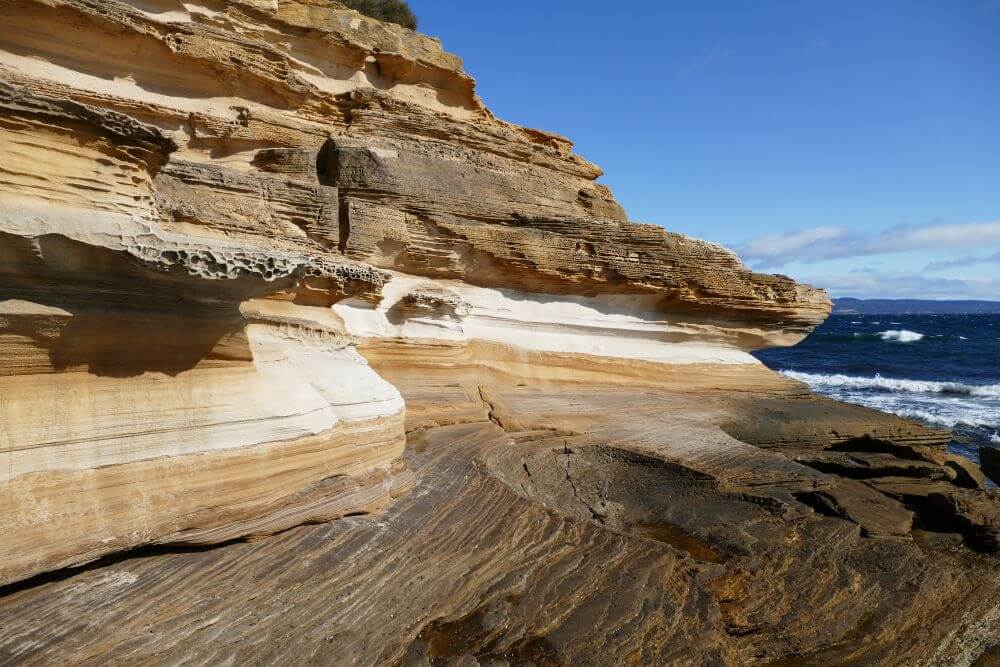
Maria Island, Tas
Maria Island is often bypassed on a trip to Tasmania, but this tiny island has it all. Abundant wildlife, convict and indigenous history and dramatic coastline are just the start. Maria Island is 30 minutes off the East Coast of Tasmania and is only accessibly by ferry. Once on the island you will need to walk or hire a bike to get around. Pack a lunch as there are no shops on the island.
You will see plenty of wombats, pademelons, potoroos, kangaroos and if you stay overnight, you might see a Tasmanian Devil. Walks to the stunning Painted Cliffs and the Fossil Cliffs are a must. Alternatively, you can cruise around the island or enjoy a birds-eye view from a scenic flight.
Read More : Plan your Maria Island Day Trip
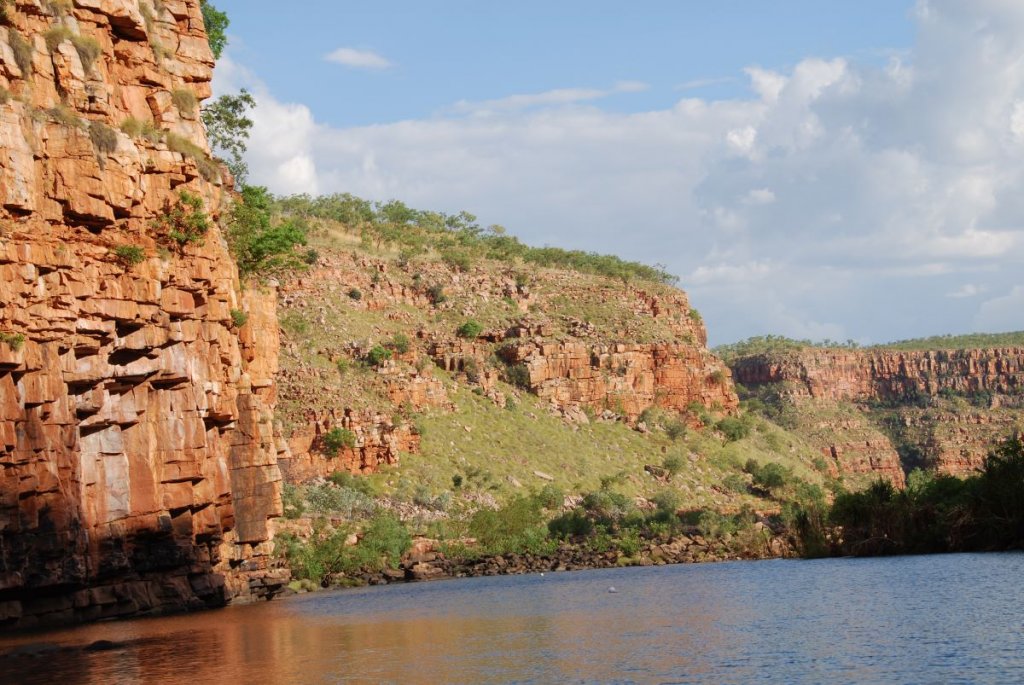
El Questro Station, WA
Explore the beauty of El Questro’s deep gorges, thermal springs, and amazing waterfalls on this 700,000 acre property in the East Kimberley. El Questro offers everything from a luxurious homestead with fine dining to campgrounds.
Join a guided tour or self-drive to find the best waterfalls, swimming holes, lookouts, tropical plants and top fishing spots. Cruise the rivers that run through the El Questro property and see the ‘spitting’ Archer fish in action. El Questro offers options for all travellers to experience this remote outback region.
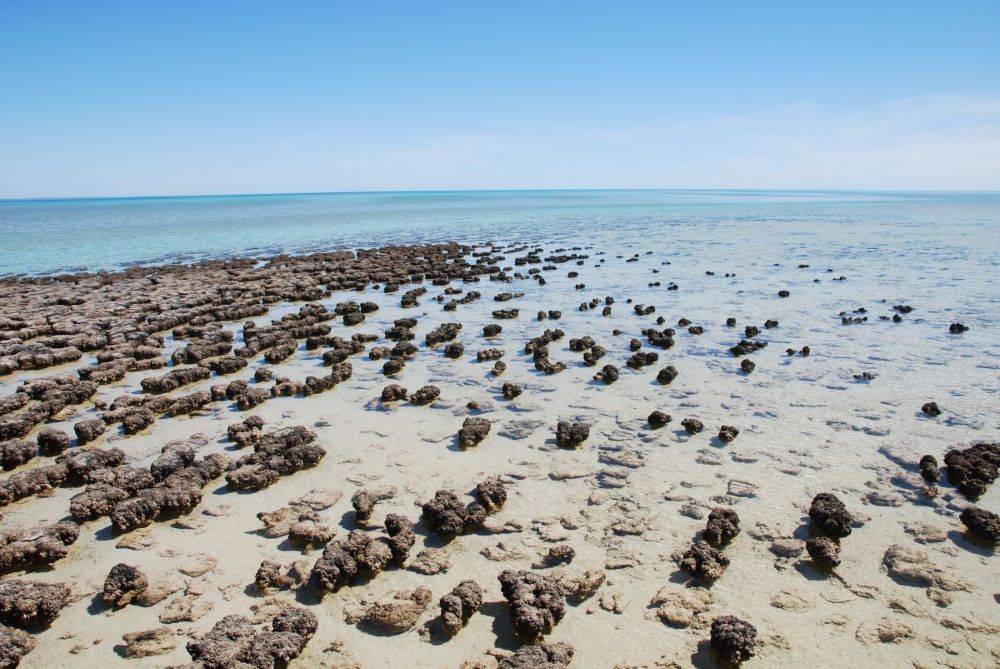
Shark Bay, WA
Shark Bay is approximately 850 kilometres north of Perth. The diverse landscapes, ancient geology and rare marine wildlife are a World Heritage area. Follow the World Heritage Drive to handfeed dolphins at Monkey Mia, see ancient Stromatolites at Hamelin Pool and a beach made of tiny shells at Shell Beach.
Book a tour to experience the Coral Coast on board a wildlife or fishing cruise. At night experience the outback sky in its full glory or jump on board a chopper to view the coastline from above where red land meets aqua blue water.
Read More : Explore Shark Bay World Heritage Area
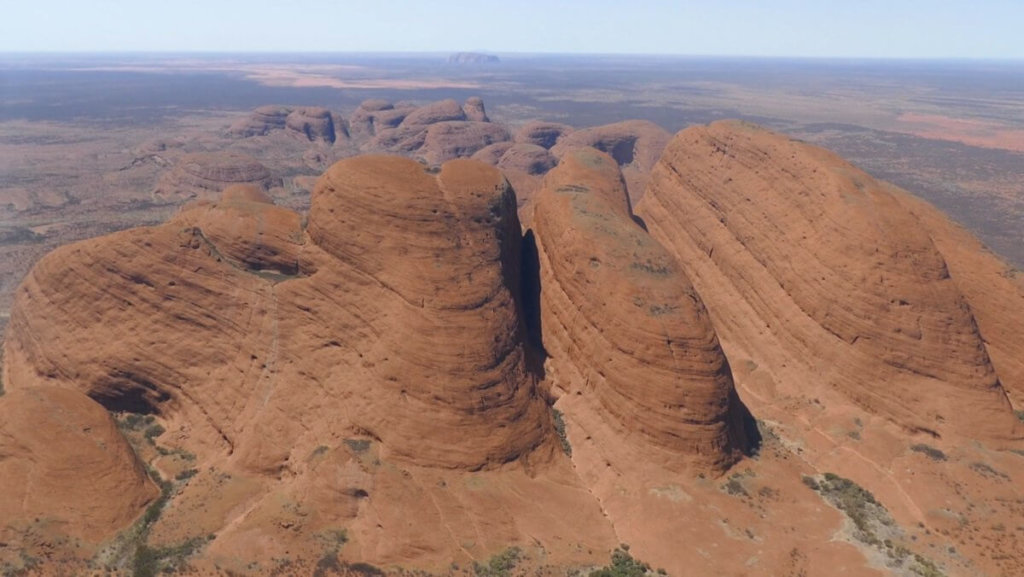
Kata Tjuta, NT
Australia’s Red Centre is home not only to Uluru, but also Kata Tjuta – the Olgas. The 32 weathered rock domes are over 500 million years old. The highest dome is 200m taller the Uluru. Kata Tjuta National Park holds special significance to the local Anangu Aboriginal people.
Follow the 7.4km Valley of the Winds trail through the domes to experience the beauty of Kata Tjuta. If you are looking for an easier walk you can also take the shorter Walpa Gorge walk. Head to the sunset viewing platform to watch the domes turn a deep red colour as the sunsets. Scenic Flights are also a wonderful way to experience this vast outback landscape.
Read More : Don’t miss the Valley of the Winds Walk
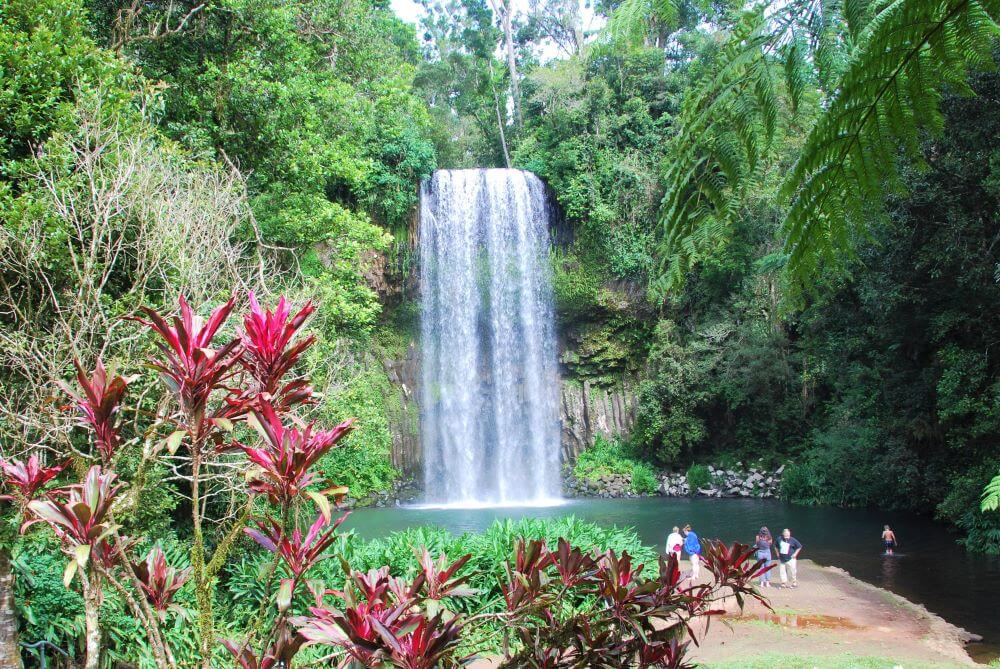
Atherton Tablelands, Qld
Enjoy waterfalls, rainforest, restaurants, antique shops and galleries in the cooler-climate of the Atherton Tablelands in Far North Queensland. Located just south of Cairns, you can follow the waterfall circuit past 17 waterfalls including Millaa Millaa Falls, Millstream Falls, Malanda Falls, Barron Falls and Tchupala Falls.
Sail over the Tablelands in a hot air balloon or glide above the rainforest canopy on the Skyrail Rainforest Cableway. Stop in at the many roadside stalls for yummy fresh produce or try and choose just one flavour from the many ice-creameries. Take a guided night tour in the National Park to spot a tree kangaroo, platypus, brolga, quolls or rock wallaby.
Read More: Find the Best Waterfalls in Queensland
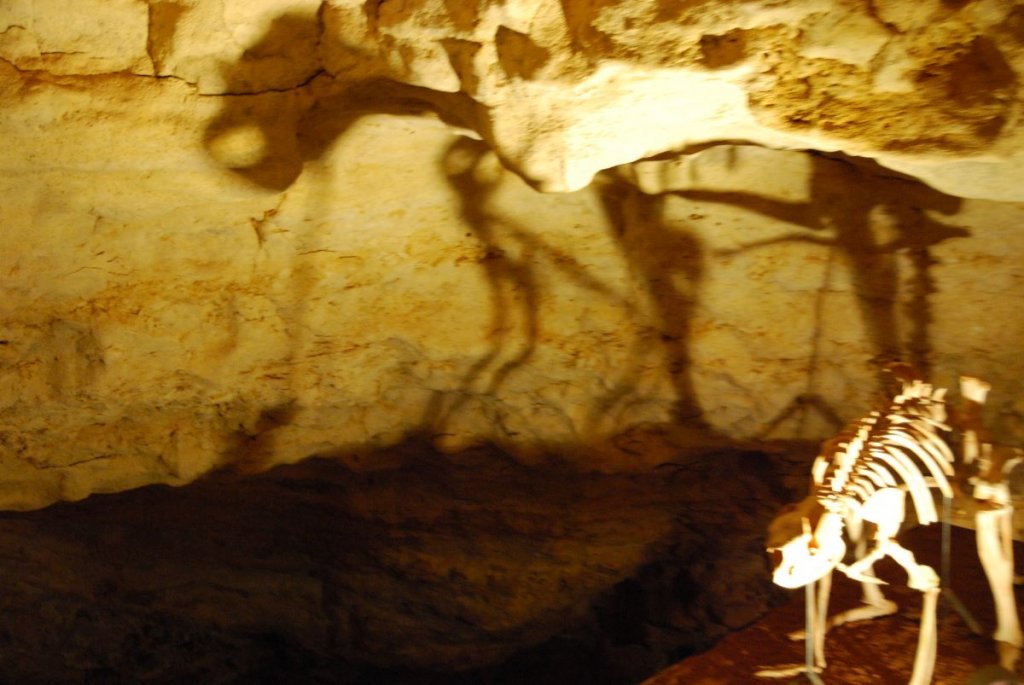
Naracoorte Caves, SA
The Naracoorte Caves are one of the most important fossil sites in the world. For thousands of years animals would fall into the caves and get trapped, creating a large collection of preserved bones. Visit the Wonambi Fossil Centre to learn about the ancient mammals, birds and reptiles that inhabited this area.
The park consists of 28 caves, 4 of which are open to the public. Many of the caves provide a stunning display of stalactites and stalagmites. Take a self-guided tour of Stick Tomato Cave or join the guided tour of Alexandra Cave. If you would rather stay above ground, you can follow the Roof Top Loop Walk for glimpses inside the caves or to see bats as they exit the caves in the evenings.
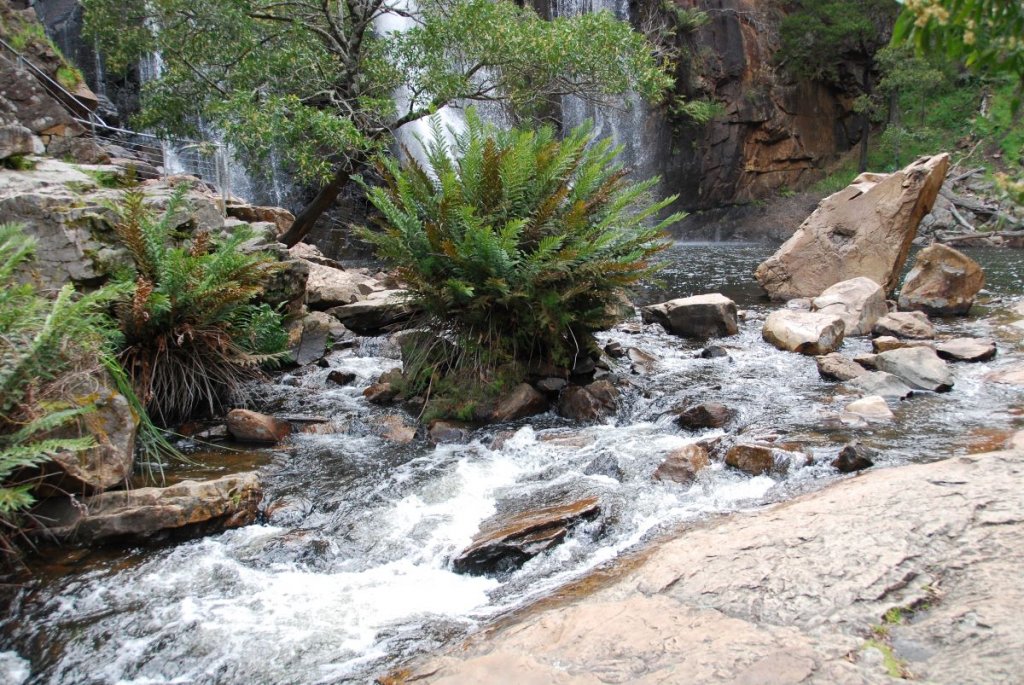
The Grampians, Vic
Base yourself in the tiny town of Halls Gap situated in the Northern Grampians in Victoria. The best way to explore the Grampians National Park is on foot. For a multi-day hike, you can tackle the Grampians Peaks Trail. On shorter walks you can see the Pinnacles Lookout, Reed Lookout, MacKenzie Falls or the Balconies.
The walks take you over bridges and creeks, along ridgetops and down to rock pools. If you are up for a scenic drive you can follow the Grampians Way visiting the nearby villages of Dadswell Bridge, Moyston and Cavendish. Stop along the way at the local vineyards and cellar doors.
Read More: 10 Best Waterfalls in the Grampians
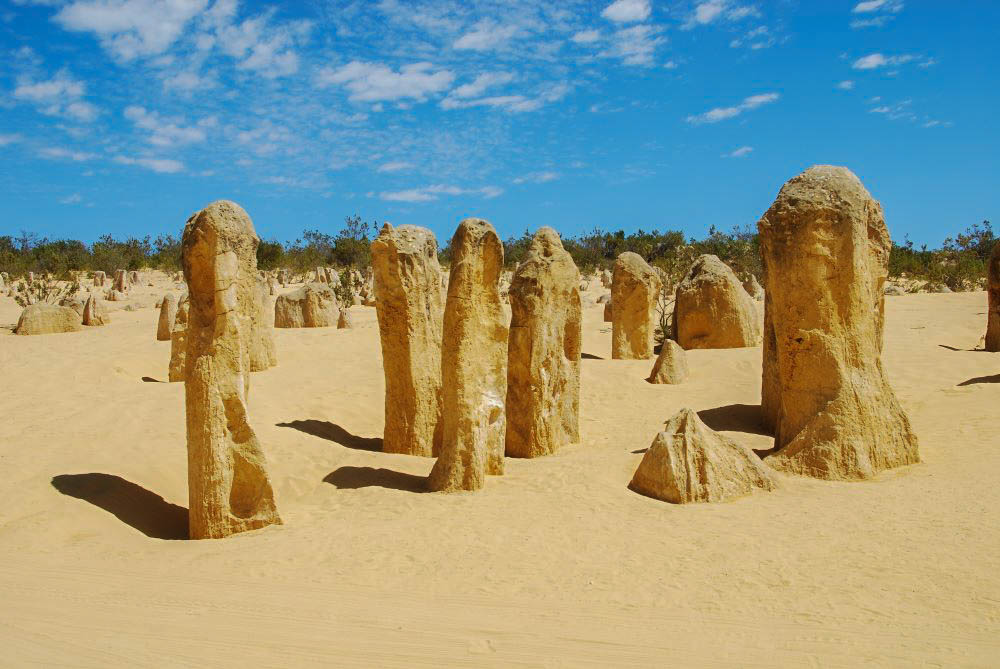
The Pinnacles, WA
The Pinnacles Desert is in the Nambung National Park 200km north of Perth in Western Australia. The Pinnacles formed around 25,000 years ago when the sea receded and left shells in the sand. Gradually the wind removed the sand leaving thousands of sandstone pillars poking out of the ground.
You can follow the self-guided 2wd route through the park, stopping along the way to explore the Pinnacles on foot. These impressive formations can be up to 3.5m tall. If you are in the park early in the day or late in the afternoon keep a look out for kangaroos and emus. It is also a great time to photograph the Pinnacles.
Read More : A day trip to the Pinnacles
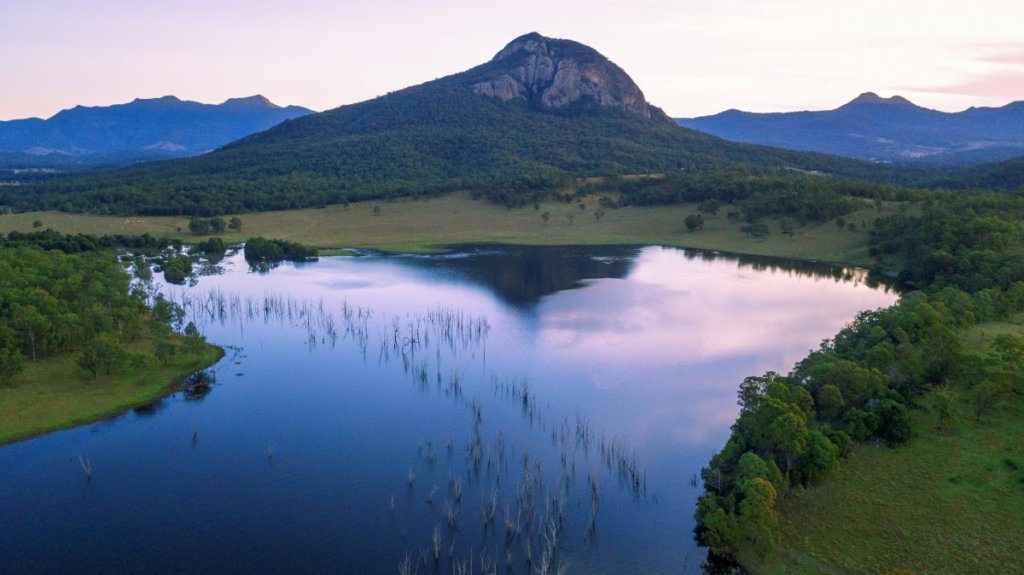
The Scenic Rim, Qld
The Scenic Rim is home to six National Parks full of waterfalls, rainforests, walking trails and stunning views. Visit the charming country town at Tamborine Mountain and see the glow worms, craft breweries and ancient rainforests. The parks offer a range of walking trails from multi-day hikes to short loop walks to some of the most scenic waterfalls and views.
In Lamington National Park take the Moran’s Falls Walk for amazing views over the volcanic gorge. You can choose a scenic drive and short walk or be a bit more adventurous and go hang-gliding, rock climbing, hot air ballooning or paddle in a kayak. Lake Moogerah is a hive of activity in the summer with waterskiing, jet skiing, swimming and camping.
Read More : Hike the nearby Warrie Circuit Trail
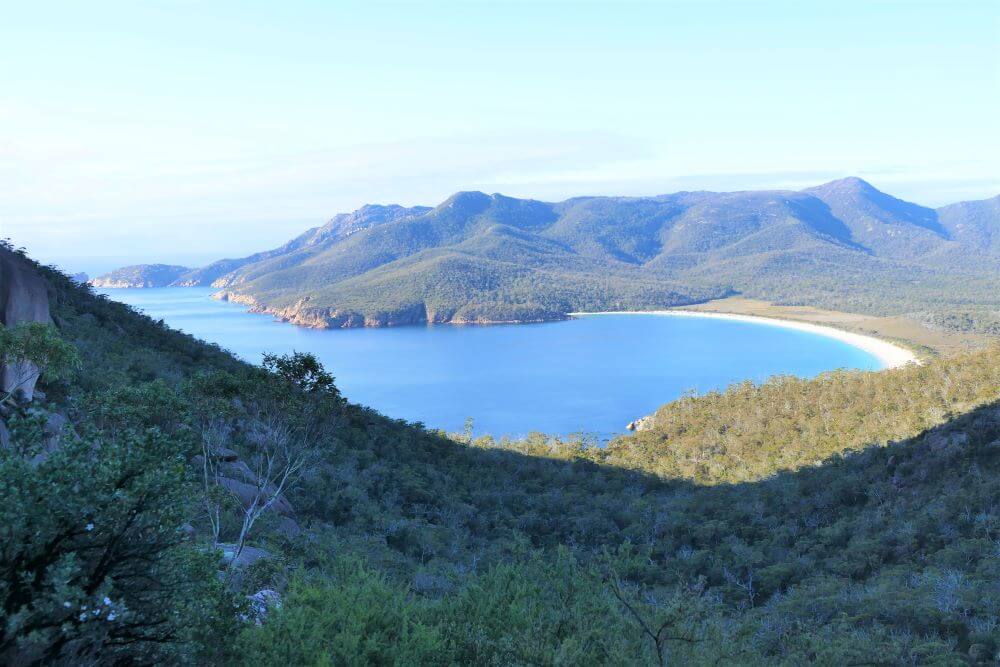
Wineglass Bay, Tas
Wineglass Bay in Freycinet National Park is one of the most recognized views in Tasmania. Enjoy the beautiful sweeping beaches and clear blue water surrounded by the towering Hazards Range. Swim, kayak or cruise around Wineglass Bay and the Freycinet Peninsula.
The 2.5 hour Wineglass Bay Walk takes you to the white sandy beach with views of the Hazards. If you are keen to go a bit further, you can try the 11km Wineglass Bay-Hazards Beach Circuit and cross the Isthmus to Hazards Beach.
Read More : Is it worth stopping at the Wineglass Bay Lookout
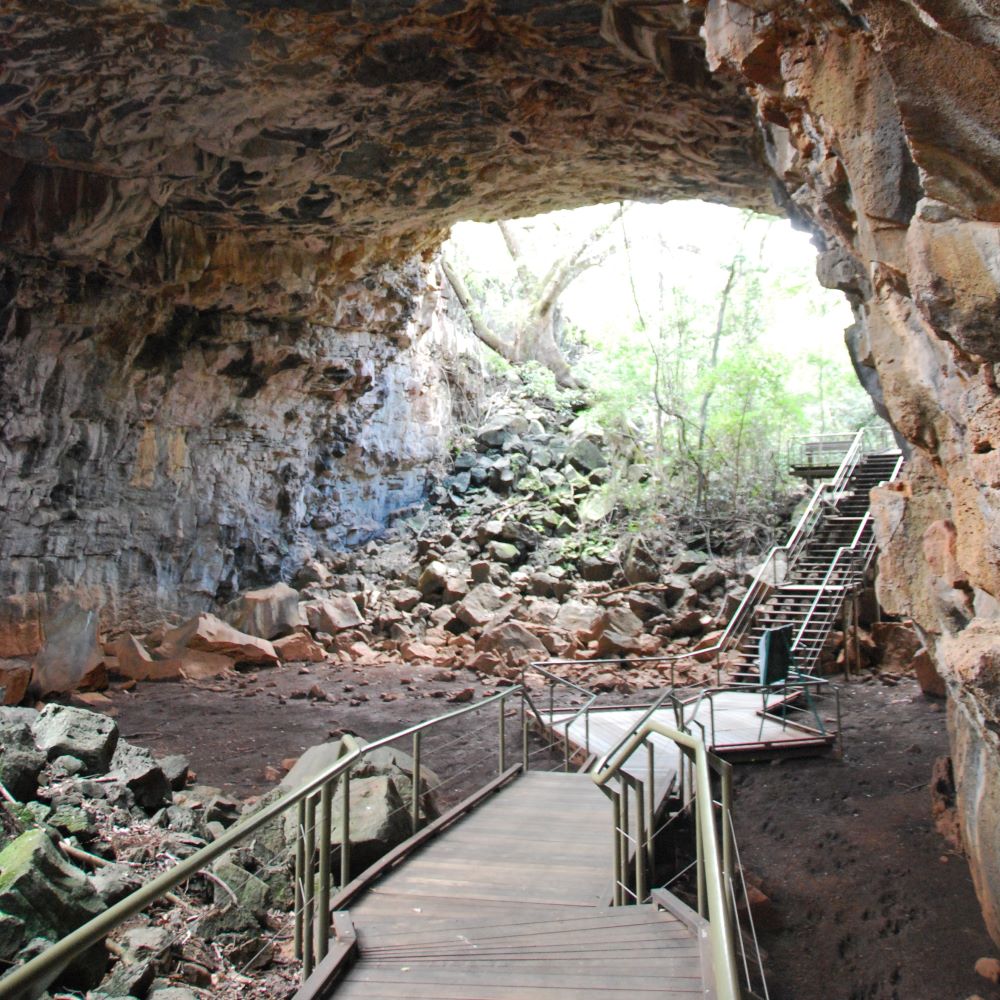
Undara Lava Tubes, Qld
The Undara Lava Tubes formed 190,000 years ago when a volcanic eruption created these massive lava tubes and cave systems. As you walk through these giant tubes it is hard to believe they were once filled with boiling lava.
There are different length guided tours available through the site where you can learn about the area’s geology. Also hear about the animals that make Undara their home including kangaroos, wallabies, birds, bats and snakes. Dusk is a great time to visit as you can see thousands of bats leaving the caves for the night.
Read More : Plan your Savannah Way Road Trip

Karijini National Park, WA
It is a 1400km drive from Perth to Karijini where you will find enormous gorges, beautiful waterfalls and cool plunge pools. On the surface the landscape appears harsh and dusty. It is not until you descend into one of many gorges that you will be transported into another world.
Swim in the spring fed pools beneath Fortescue Falls, let the fish nibble your toes at Fern Pool and take a dip in the gorgeous circular pool. While following the walking trails through the park keep an eye out for the kangaroos, rock wallabies, echidnas, goannas and the odd snake. Karijini is in a remote part of Australia but you will not regret making the effort to visit there.
Read More : Karijini – Camping in Nature’s Playground
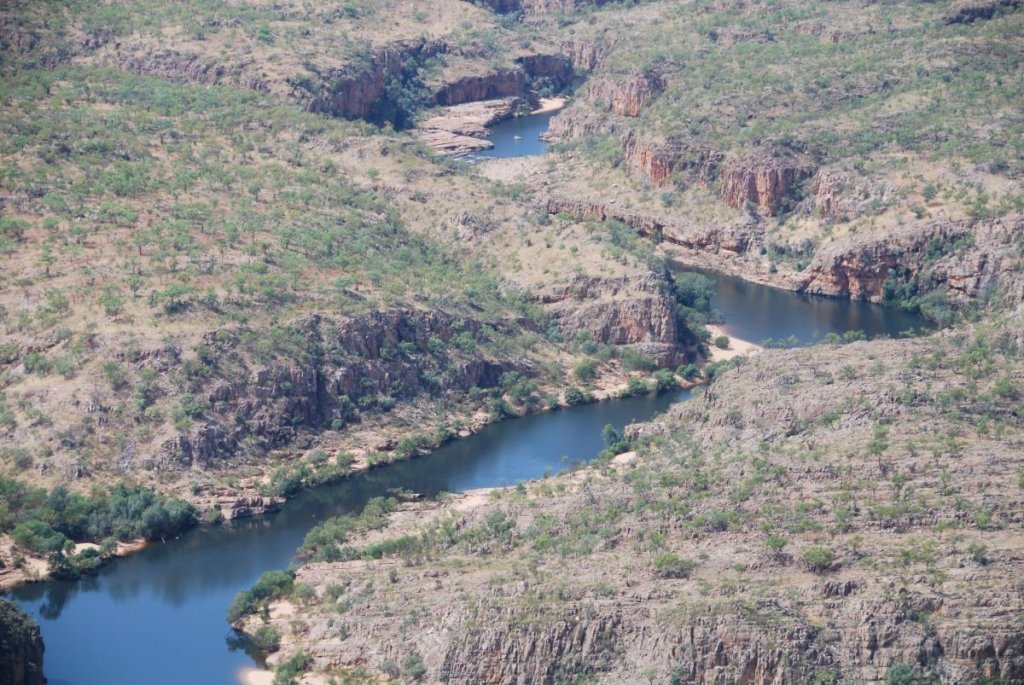
Katherine Gorge, NT
Nitmuluk National Park is home to the 12km Nitmuluk (Katherine) Gorge. Cruise through the 13 gorges carved through the sandstone cliffs that rise from the water. Listen to the Jawoyn people, the Traditional Owners of the Park, talk about their culture and history of the region.
With 100km of walking trails you can explore the park’s lookouts, wildlife and riverbanks. Canoe and paddle along the gorge to waterfalls, narrow Butterfly Gorge, rock art and towering cliffs. Swim in the upper and lower pools of Edith Falls or follow the trail to the cool Sweetwater Pool. For an aerial view of this spectacular gorge the helicopter flight is incredible.
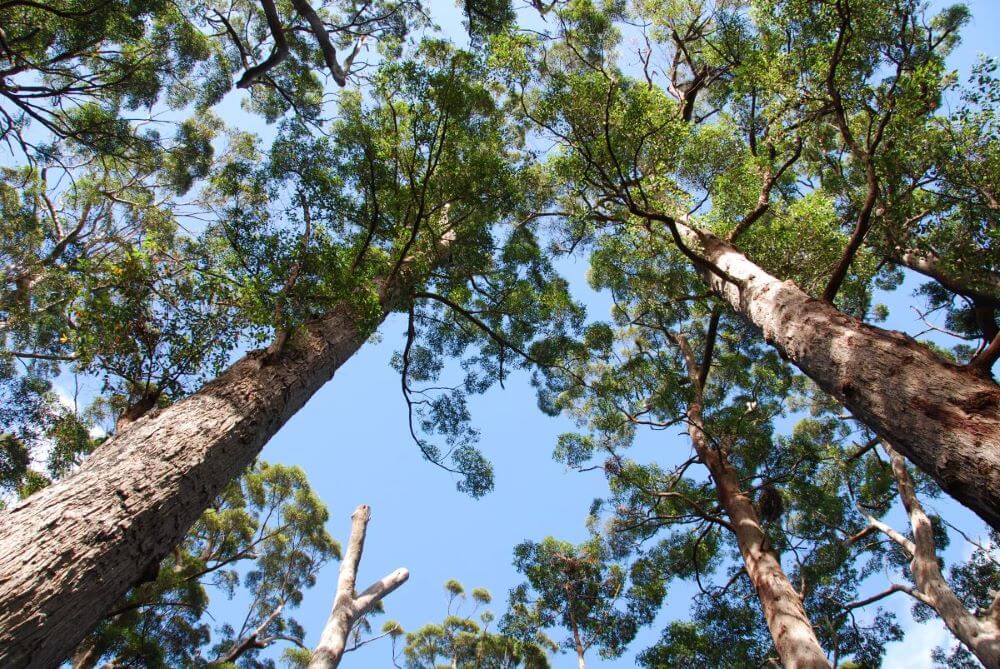
Valley of the Giants, WA
The Valley of the Giants is an absolute must when you are on the south coast of Western Australia. Around 400km from Perth you can walk through an ancient tingle forest. Walk through the tree canopy 40 meters above the ground at the Tree Top Walk in the Walpole-Noralup National Park.
If you are a bit more daring, you can climb the 53-meter Gloucester Tree which was originally chosen as a fire lookout in 1947. There are no expert guides, no harness, nothing to catch you if you fall, it’s straight up on metal pegs spiraling around the tree. The Gloucester Tree is one of eight original fire lookouts and you can also climb the Dave Evans Bicentennial Tree.
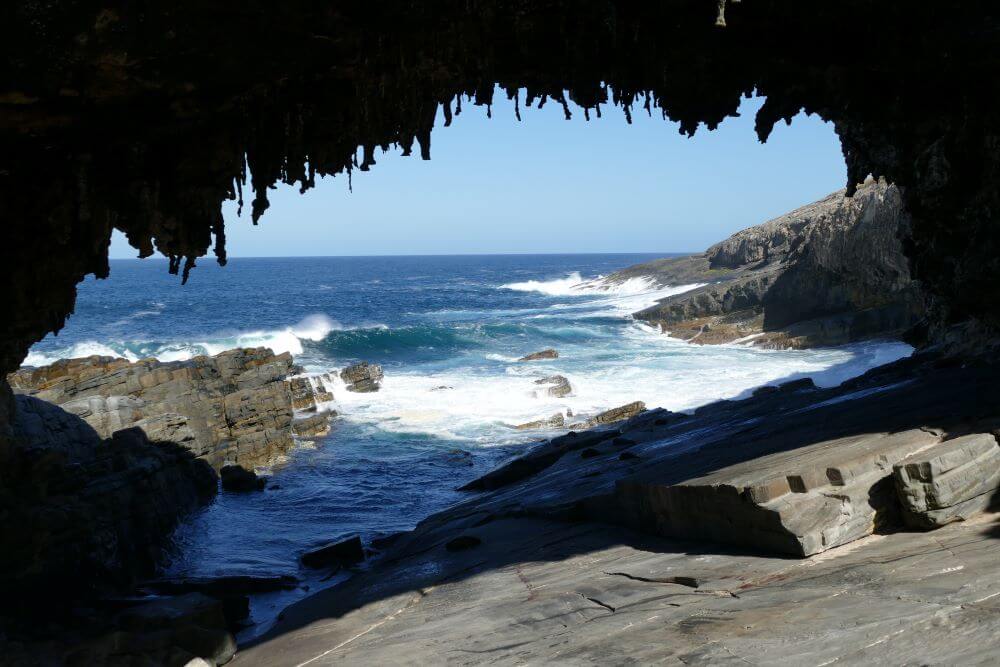
Kangaroo Island, SA
Sitting just off the coast of South Australia, Kangaroo Island has beautiful beaches and abundant wildlife. Its 500km coastline has stunning bays, rugged cliffs and long stretches of deserted beaches to explore. Seal Bay and Vivonne Bay are a couple of must-see spots.
You will not have to venture far to see sea lions, koalas, echidnas, goannas and wallabies in their natural environment. Kangaroo Island has many gourmet options. Sample locally produced wines, spirits, olives, seafood and the purest honey. If you are looking for an adventure you can try quad biking, sandboarding, kayaking, snorkelling and more.
Read More : Plan your Kangaroo Island Getaway
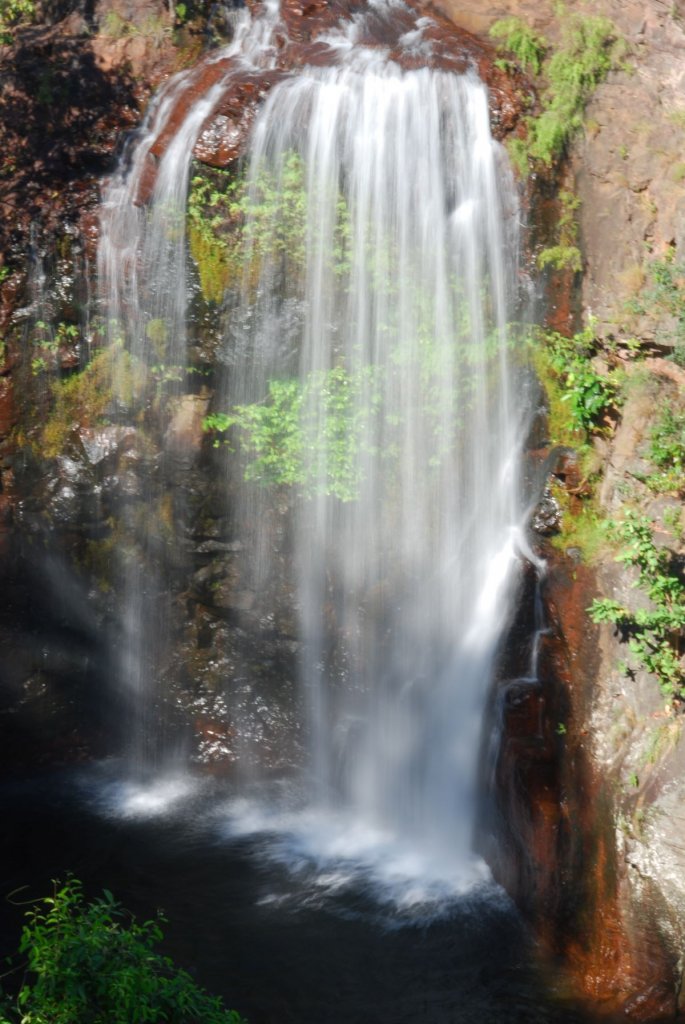
Litchfield National Park, NT
Just 90 minutes drive from Darwin, Litchfield National Park is the perfect day trip. Follow beautiful trails, swim under waterfalls and spot 2 metre tall termite mounds. You will be surrounded by monsoonal forests as you camp inside the National Park.
You can opt for a self-drive route visiting the famous Wangi Falls and Florence Falls or stop for a dip at Buley Rockhole. If you would rather go with a tour guide you could take the 60 minute helicopter flight that includes a quick dip in a private waterfall. Staying on the ground you can also join a group tour visiting the big sites along with a jumping crocodile cruise.
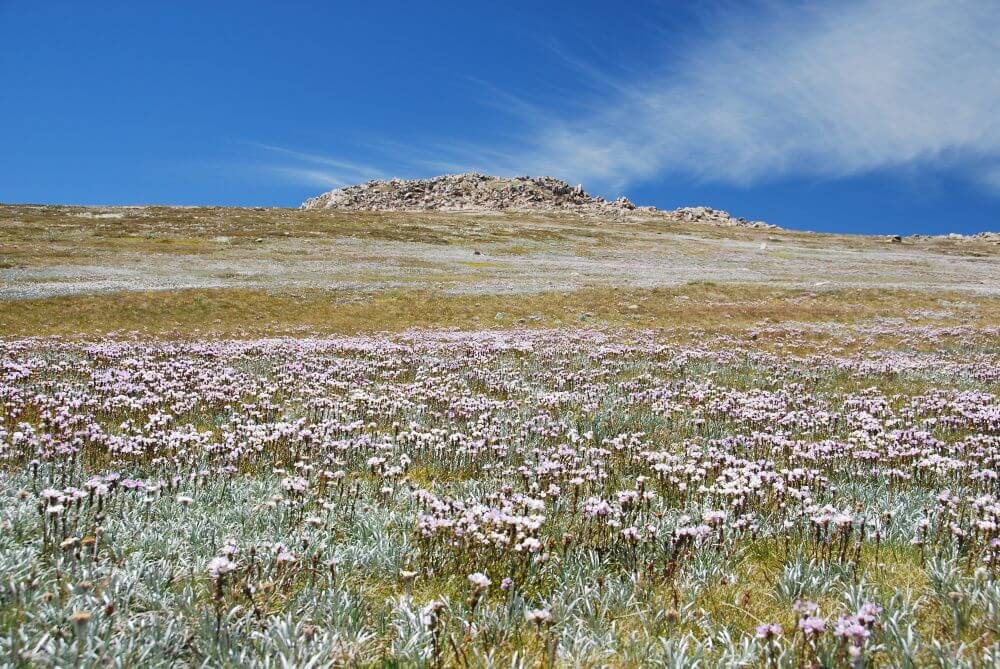
Mount Kosciuszko, NSW
Mount Kosciuszko is the tallest mountain in mainland Australia at 2,228 meters high. If you are looking to tick off one of the World’s Seven Summits Challenge, then Mount Kosciuszko would be the easiest one to start with. The best time to reach the Summit is from December to March when the wildflowers are in full bloom. During winter months the mountain is covered in snow.
You can choose from two main walks to reach the summit. One option is to take the chairlift part of the way leaving just 6km to the peak. The alternative is to start at Charlotte Pass and follow the 18.6km track to the summit. The walking trails will take you past historic huts, snow gums, creeks and stunning views from Australia’s highest mountain.
Read More : Climb to the Summit of Mount Kosciuszko with Kids
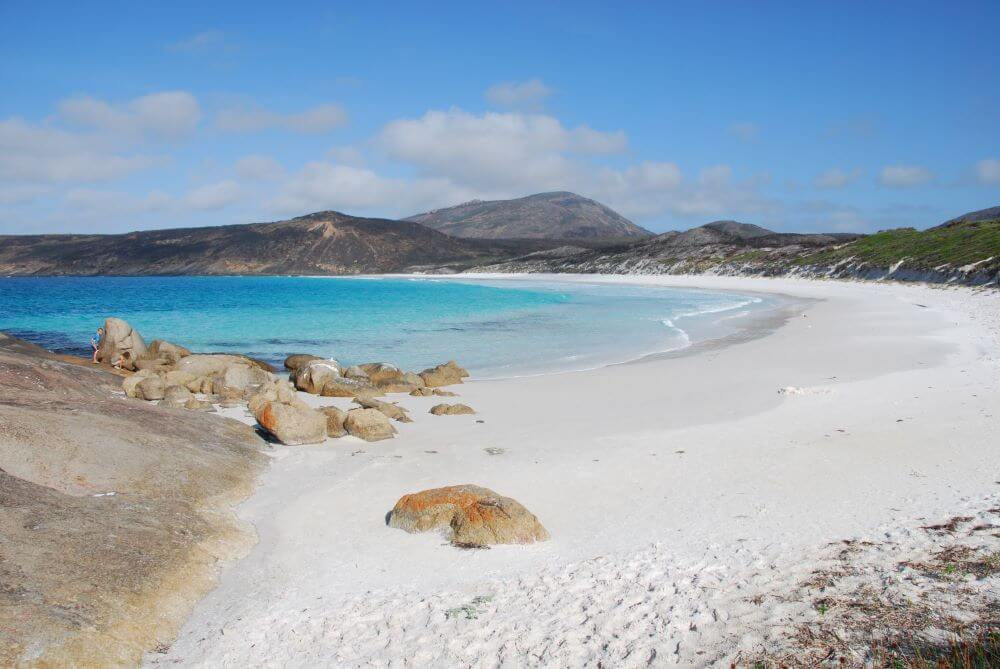
Cape Le Grand National Park, WA
Cape Le Grand National Park is one of those remote special places that you should have on your itinerary. Located 750km East of Perth you will find five stunning beaches including Lucky Bay and Hellfire Bay. The white sandy beaches and turquoise blue water are perfect for a cool dip.
Watch the kangaroos on the beach, go swimming, surfing or fishing. Le Grand Beach and Lucky Bay have great camping spots with bbq’s, water and toilets. Hike the Le Grand Coastal Trail that links the most spectacular coastal sections of the park or walk up Frenchman Peak for panoramic views.
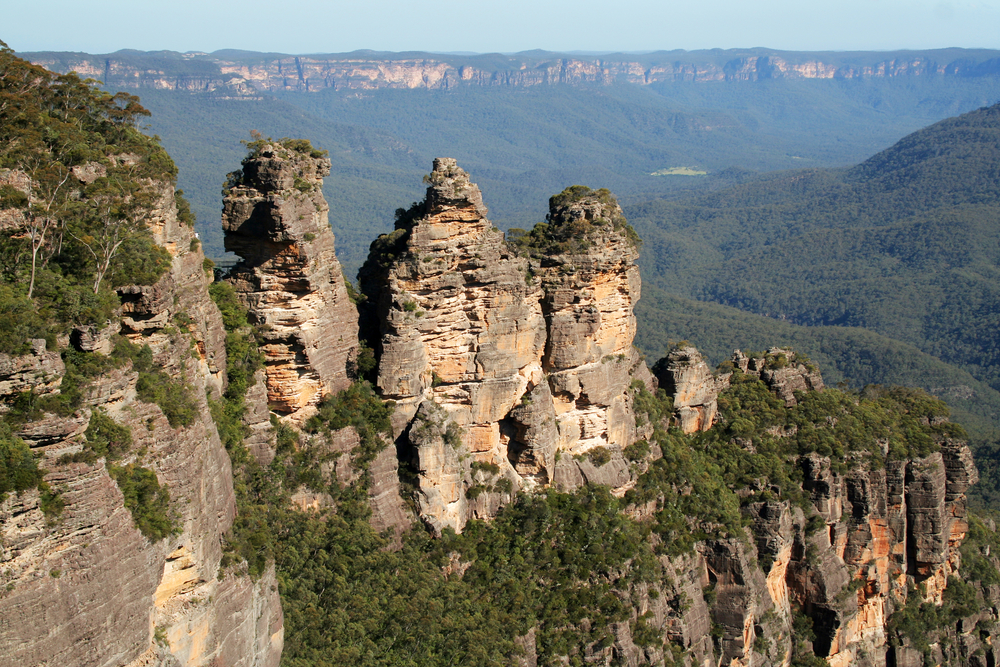
Blue Mountains, NSW
Take a day trip from Sydney to explore the World Heritage Listed Blue Mountains National Park. There are many ways to explore the parks Aboriginal history, waterfalls and scenic views. If you are new to the Blue Mountains book a tour to see the iconic Three Sisters rock formation and Wentworth Falls.
The Blue Mountains National Park has plenty of walking trails along cliffs, over streams, through valleys and forests. The Princes Rock Walk to Wentworth Falls is an easy 1.8 km walk or ride the Railway to Katoomba’s Scenic World. For the adventurous, try rock climbing, abseiling, canyoning, horse riding or bike riding.
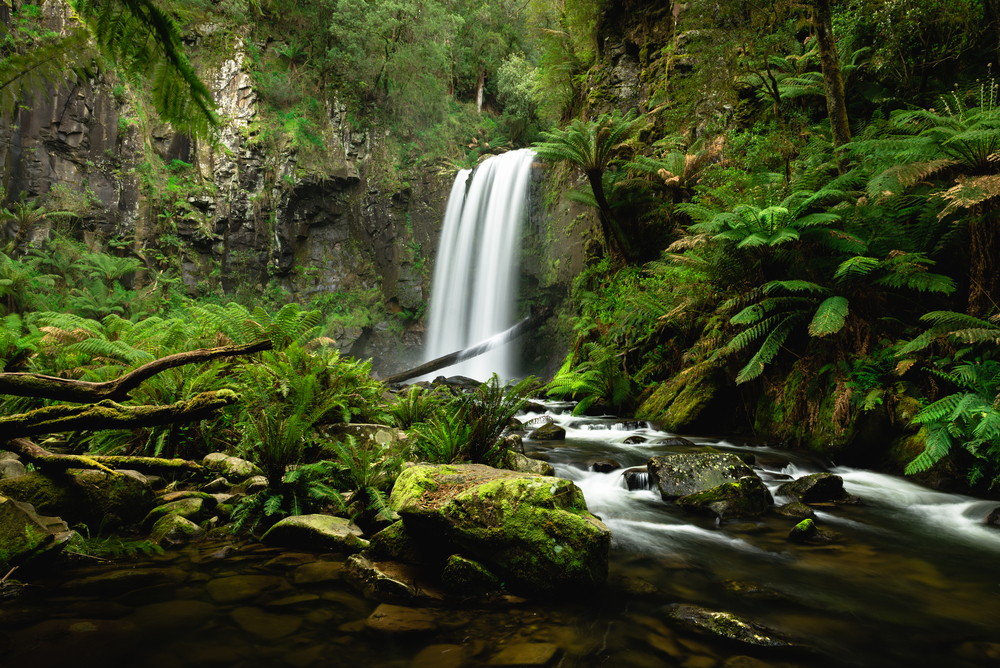
Otway Ranges, Vic
If you are following the Great Ocean Road it is hard to look away from the spectacular coastal scenery. But if you look inland, you will catch a glimpse of the Great Otway National Park. Around 3 hours from Melbourne this region has tall trees, lush ferns and many waterfalls to explore.
Visit the glow worms at Melba Gully, paddle with platypus at Lake Elizabeth or zoom through the treetops at the Otway Fly. The park is home to many walking tracks and bike trails where you can see the sights and the wildlife up close.
Read More : Paddle with Platypus in the Otways
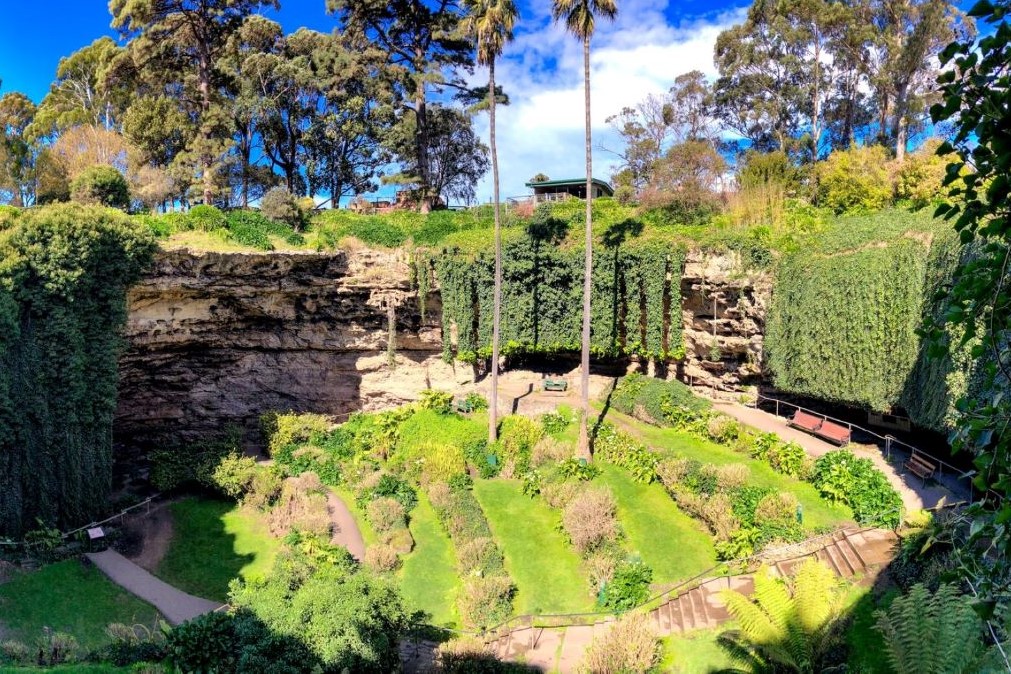
Umpherston Sinkhole, SA
The Umpherston Sinkhole is one of the most spectacular gardens in the Mount Gambier. Created when the top of the limestone cave collapsed, the topsoil forms the floor of this perfect sunken garden. James Umpherston turned the sinkhole into a garden in 1886.
Follow the ramp and steps into the Sinkhole to see the stunning terraced garden, hydrangeas, hanging vines and tree-ferns. In the evening, take some fruit with you to hand feed the possums that come out to feed as the sunsets. Umpherston is just one of the beautiful sinkholes to explore on the Limestone Coast.
Read More : Mount Gambier’s Incredible Sinkholes
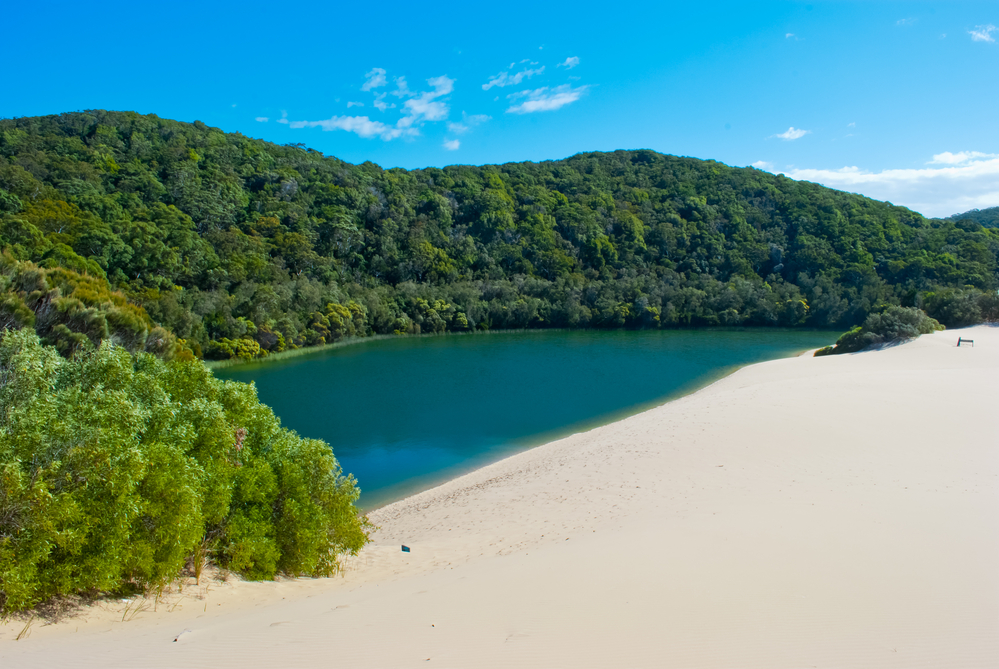
Fraser Island, Qld
Fraser Island is a World Heritage Listed site in recognition of the fragile eco system of the world’s largest sand island. There are 250km of stunning sandy beaches, 40km of colored sand cliffs, lush rainforests and over 40 dune lakes.
Fraser Island is home to many birds, animals and reptiles. See migrating whales around the island, watch dingoes walk along the beach and look out for one of the 79 species of reptiles. Lake McKenzie’s clear blue fresh water is a favourite for visitors who want to take a dip. You will need a 4wd as the main road on the island is Seventy-Five Mile Beach. Day and overnight tours are another way to explore this unique wilderness.
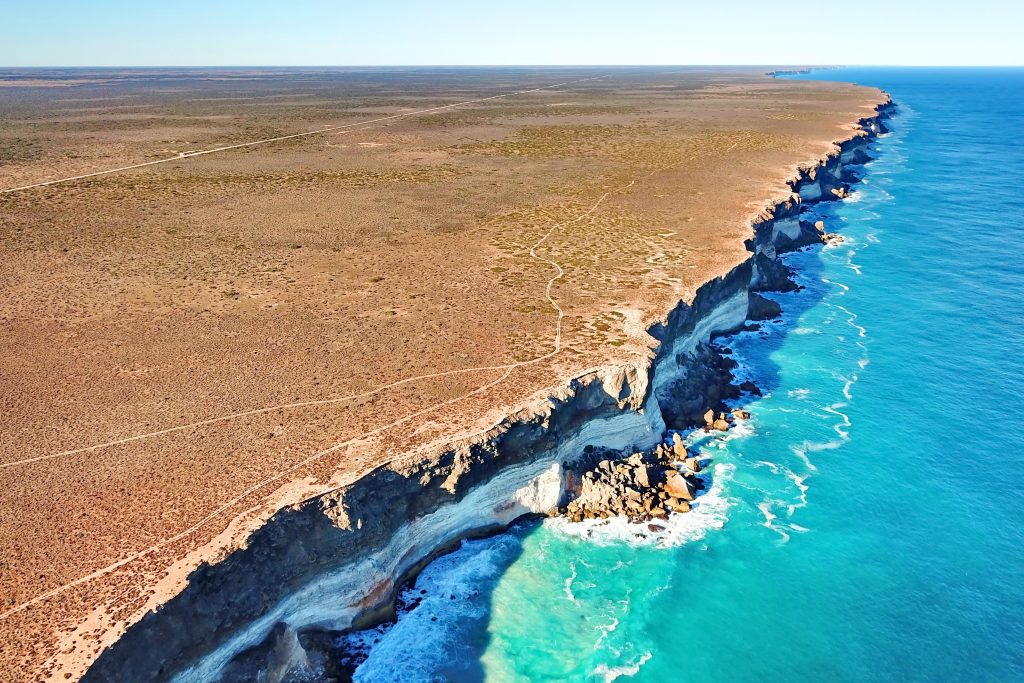
Nullarbor, SA
If you are looking for an iconic Australian road trip then crossing the Nullarbor is it. The route runs between Ceduna in South Australia to Norseman in Western Australia. The 1200km journey takes you through one of Australia’s most desolate and isolated landscapes on a sealed road. Nullarbor means ‘no trees’ in Latin and that is certainly the case. Along the way you will drive the longest straight section of road on the planet – 146.6 km.
You are likely to see plenty of wildlife along the way including kangaroos, emus, dingoes and wild camels. Between June and October you will see plenty of whales and their calves at the Head of the Bight. The towering Bunda Cliffs and cliff top boardwalk viewing platforms make it easy to spot the whales from above.
Read More : Amazing things to see on the Nullarbor
If you enjoyed this story you might also like:
Things to do in the Adelaide Hills | Day Trips from Brisbane| Day Trips from Hobart
Like it? Pin it for Later…
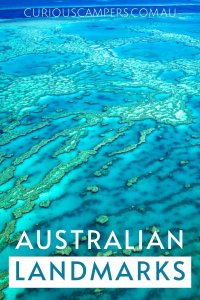
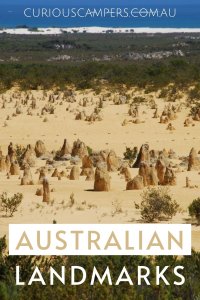
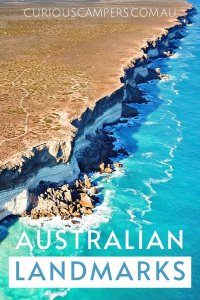
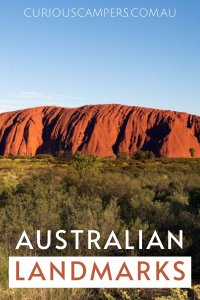
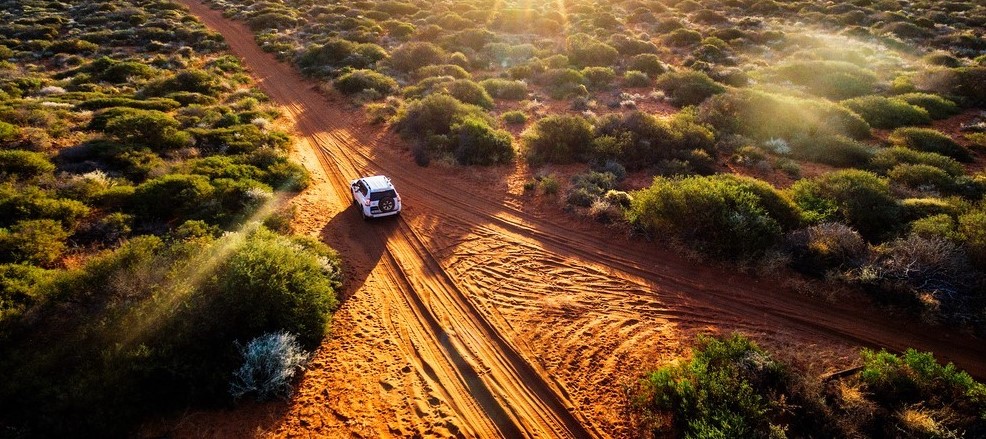
500 THINGS TO DO
Join our mailing list and receive our Free Top 500 things to do in Australia. If you love the Australian Outdoors download this list and keep it handy when you are planning a weekend away or a road trip around Australia.

